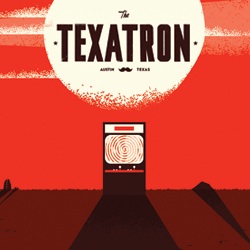ONE MORE GO: IKARUGA, THE BIG ENEMY IS APPROACHING
One of the most enduring relationships I have is with four men I’ve never met. Seven years ago, Hiroshi Iuchi, Atsutomo Nakagawa, Yasushi Suzuki and Satoshi Murata created Ikaruga, the spiritual successor to Treasure’s majestic Radiant Silvergun. Ikaruga is what some people call a top-down, vertically scrolling, combo-based, arcade shoot-’em-up. What I call it is art.
Now, the whole ‘what is art and are we it yet and if we are can we have a cookie?’ is one more futile arguments generated by videogames. It’s not a useful question, for many obvious reasons, but there is one answer to it that I rather like. It goes like this: the hallmark of good art is that every time you go back to see it, it’s changed. Or rather, it hasn’t, but you have, so through viewing it you’re able to measure and identify the changes within yourself. It’s as good an answer as any other to the great unresolvable what-is-art conundrum, and if you apply it to videogames, then my Mona Lisa is Ikaruga. Beautiful, enigmatic, alluring and unmasterable.The first time I met Ikaruga was when it was released on Dreamcast. At a time when even the spine-cards from Radiant Silvergun boxes were selling for a premium on eBay, it was a affordable way to gain access to the wonderful mysteries of Treasure. It felt like contraband – delivered in a little package, marked with little lies to throw Her Majesty’s Customs off the scent.
And, like any other illicit substance, it initiated me into a whole new world of paraphernalia and arcane procedure. Could you run it on a UK Dreamcast through DC-X? Would you risk turning your old CRT on its side so you could play it in proper vertical Tate mode? Did the telly you could up-end run 60 Hz? But eventually even all these elaborate preparations weren’t enough to satisfy and so, craving the purest possible fix, I made for the Tokyo arcades, where a small crowd of Japanese youths gathered and wondered how it was genetically possible for a human being to be so crap at games.
Time passed, of course, as did that initial, clandestine excitement. What remained was one of gaming’s sternest challenges. Seven years on, I’ve still never seen chapter five, except on YouTube. Ikaruga’s brutally simple colour-swap mechanic is totally uncompromising and totally unforgiving. Pitting my feeble wits against it became an exercise in apparent futility, as I walked away from encounter after encounter with a handful of C+s, the occasional B, and once, a single fleeting A-. But my adoration of the game didn’t dim. Indeed, if anything, the harsher the experience was, the more devoted I became.
You see, Ikaruga doesn’t treat you mean because it wants to see you fail. Ikaruga treats you mean because it wants winning to feel wonderful. But the more I became addicted to that mechanic, the more uneasy I started to feel. Volunteering to be beaten and humiliated on the promise of eventual pleasure? Isn’t there a word for that?
Probably time to take a break.
A good few years have passed since then, but today, I find myself turning once again to Ikaruga. Why? Because my new specs – my very first specs – have arrived. Twenty years of squinting at screens have taken their toll, and I can no longer pretend that the ugly smudge of a HUD is somehow the fault of a poorly calibrated plasma. But coming back to Ikaruga – complete with my newly minted eyes – has proven only that it’s more perfect than ever, and I’m more even more imperfect. It slices crisply up the centre of my screen, rippling from scarlet to indigo, from peach to aquamarine with relentless precision.
My scores, by contrast, once again refuse to budge above a C. I’m not surprised to be rubbish – that, after all has been the one constant in my relationship with this game – but now I have a new question. Are my thumbs starting to fail me too, just as my eyes have? Because now it’s impossible to ignore that a new, and even bigger, enemy is approaching: old age. And so, having been my drug and my master, now Ikaruga is my companion, a trusted guide against which I’ll measure my inevitable decline as the years pass and my faculties gradually decay. Nor does that thought depress me, because, thanks to Messrs Iuchi, Nakagawa, Suzuki and Murata, when my time comes, I won’t go gently into that good night. I’ll go spitting light and fury, flashing blue and gold, and claim my S-rank on the other side.
[Margaret Robertson is the former editor of Edge magazine and now videogame consultant. One More Go is her regular Offworld column in which she explores the attractions of the games she just can’t stop going back to.]
See more posts about: Offworld Originals, One More Go






